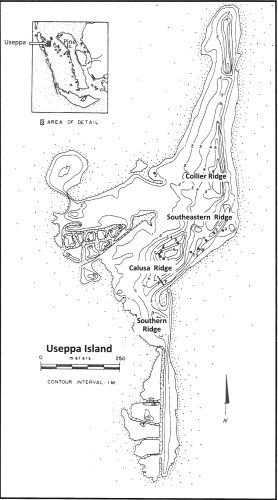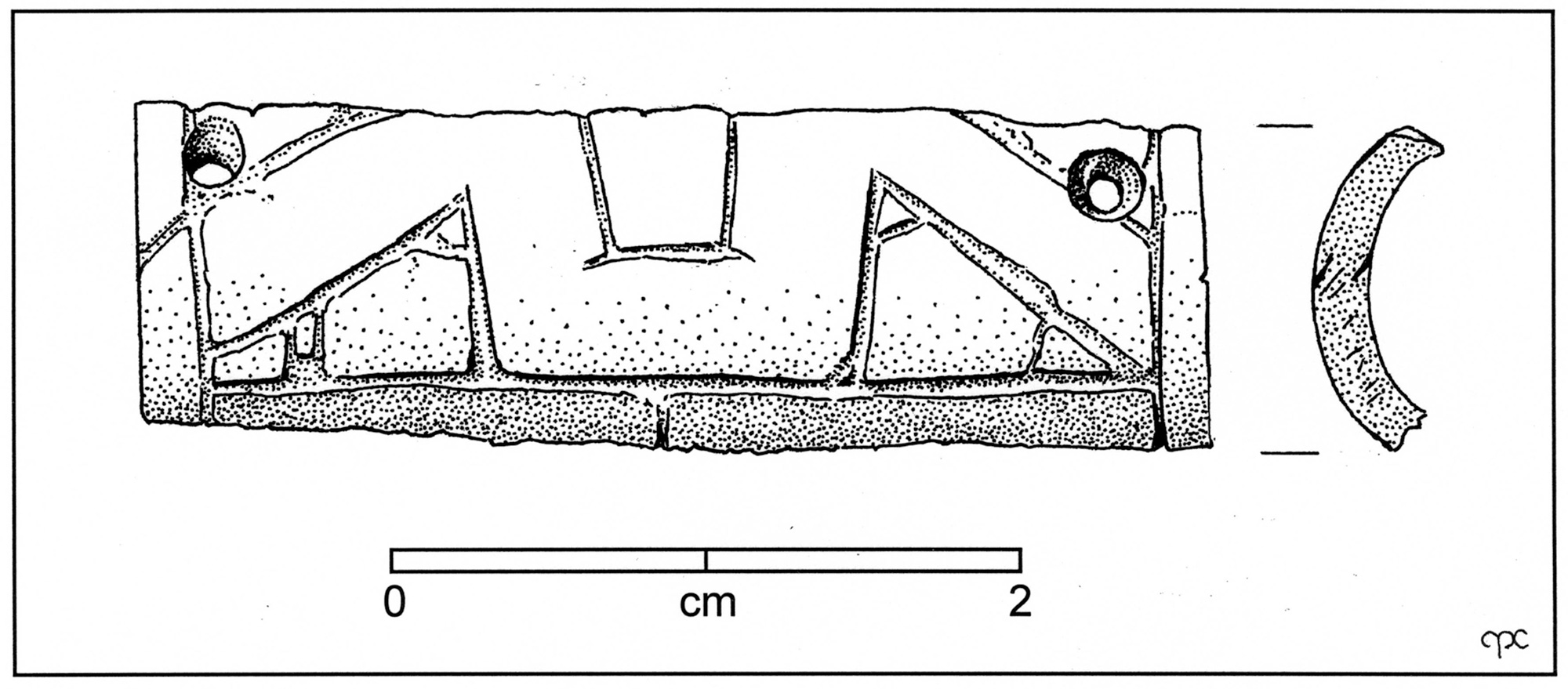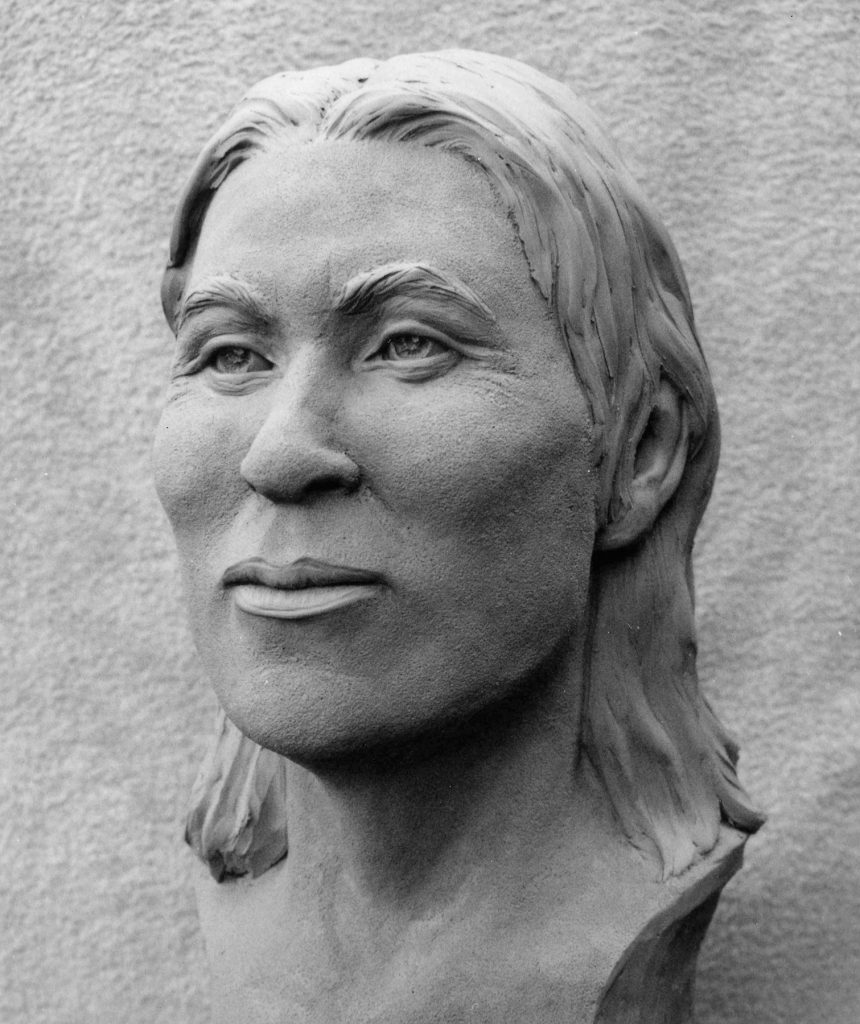The ridges of Useppa are among the oldest and highest land masses in Pine Island Sound. Shell middens dating as early as 6,000 years ago are superimposed on high sand ridges that accumulated during the Pleistocene epoch (about 2.5 million to 12,000 years ago).

The earliest record of humans on Useppa dates to about ten thousand years ago when Late Paleo-Indian people used an off -white chert stone point on the west side of a ridge in the north-central part, deposited before the landform was even an island. At that time, Useppa’s sand hills harbored upland plants and animals that were well adapted to conditions much cooler and drier than today’s.
Useppa is located just east of Cayo Costa, a barrier island. Approximately one-and-a-quarter miles long and a half-mile wide, Useppa became an island during a warm, wet period from about 5000 to 3000 B.C., when Earth’s melting ice sheets contributed to rising sea levels that flooded Pine Island Sound.
In 1947, when a human burial was exposed by the excavation for a tennis court near the Collier Inn, State Archaeologist John Griffi n wrote prophetically that Useppa Island appeared to offer “good prospects” for providing a full picture ranging from the earliest periods of occupation to modern historic times. Archaeologists from the Florida Museum of Natural History have conducted numerous studies on the island since 1979, including during the current year. As Griffi n predicted, these studies have shown that many ancient periods are represented: Late Paleo-Indian (8000–6500 B.C.), Middle Archaic (5000–2000 B.C.), Late Archaic (2000–1200 B.C.), Terminal Archaic (1200–500 B.C.), Caloosahatchee I and II periods (500 B.C.–A.D. 1200), and the modern historic era.
Middle Archaic people occupied Useppa during spring and summer. Their artifacts were found in the lower strata of Calusa Ridge. They left behind chert waste fl akes (debitage), mollusk shells, fi shing net-mesh gauges made of clam shells—sized to make nets that would catch large numbers of small schooling fish—and bits of charred wood from pine trees.
By the latter part of the Middle Archaic, the people who visited Calusa and Collier ridges used mangrove and seagrape rather than pine for their firewood, and subsisted on sharks, rays, and other high-salinity species. A burial from this period was discovered on the east side of Collier Ridge: a juvenile male buried in a semi-flexed position, with quahog clam shells dating to 2600 B.C. above and below the burial. The burial of a male between 15 and 22 years old was uncovered on Calusa Ridge. Tests revealed that this young man died around 2400 B.C. Carvings on an incised deer bone pendant were consistent with the artistic style of others from Archaic-period sites throughout Florida and as far north as the St. Johns River.

During the Late Archaic (2000 B.C.–1200 B.C.), several sites in Pine Island Sound were occupied, among them Useppa, Calusa Island and Howard Mound in Bokeelia, and Galt Island in St. James City. On Useppa, Calusa Ridge was abandoned but the Southern Ridge and Collier Ridge near the eastern shore continued to be occupied. Ceramics were used on Useppa for the first time during this period. Fiber-tempered pottery of a kind first made in northeastern Florida was used, as were steatite (soapstone) vessels. Sand-tempered plain pottery was in use by 1200 B.C. Diet consisted of saltwater fish and mollusks, along with edible plants such as mastic berry, hackberry, prickly pear, seagrape, grasses, greens, and acorns.
During the Caloosahatchee I period (500 B.C.–A.D. 500), the occupation of Useppa was intensive, evidenced by a rapid accumulation of midden material over a broad area. Similar accumulations during this period also occurred on Burgess Island, Cabbage Key, Josslyn Island, Galt Island, Big Mound Key, and Pine Island. During the IIA period (A.D. 500-800), occupation was less intensive, but Collier Ridge was used as a burial place.
Beginning after A.D. 700 and continuing during the early part of the Caloosahatchee IIB period (A.D. 800–1200), Useppa’s shell middens in the area of the Southeastern Ridge increased in size. In 2006, UCLA graduate student John Dietler conducted a ten-week archaeological dig on the lower part of the ridge, exposing lightning whelk tool debitage in sufficient quantity to suggest that mass production of shell tools occurred in the eighth century A.D. During the ninth century, mollusk shells in the later, upper part of the ridge revealed a diet from high-salinity waters while habitation at Pineland slowed to a standstill, probably due to lowered sea levels in the harbor that led to depleted fish resources close to Pine Island. During the succeeding periods (A.D. 1200-1700), Pineland and other sites prospered again, but Useppa was apparently abandoned. It remains a mystery why Useppa fell out of favor.
Useppa Island is listed on the National Register of Historic Places because of its significant pre-columbian archaeological sites. The Archaeology of Useppa Island, edited by William Marquardt, provides in-depth information about the geology, archaeology, and history of Useppa. To order, use the form in this newsletter or look for it in the book shop at the Randell Research Center
This article was taken from the Friends of the Randell Research Center Newsletter Vol 11, No. 4. December 2012.

